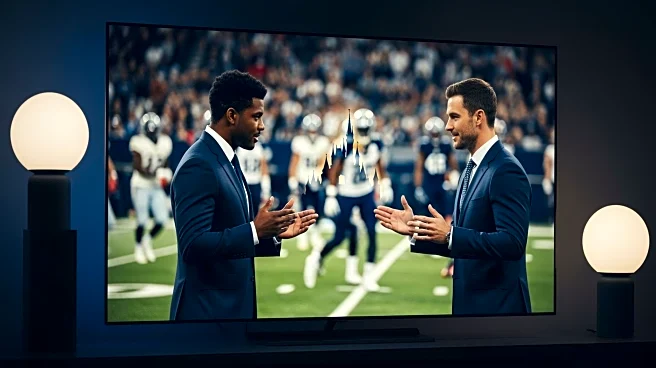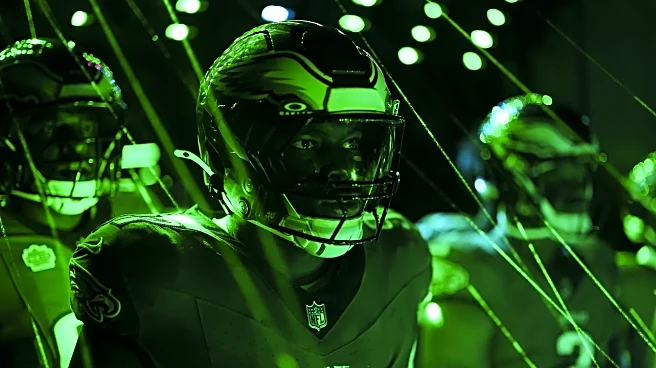What's Happening?
Advertisers are increasingly integrating their brands into live sports broadcasts, moving beyond traditional commercials to create unique in-game sponsorships. Dos Equis, for example, has partnered with
ESPN, ABC, SEC, and ACC Network to feature special graphics during two-point conversions in college football games. This approach aims to engage viewers by making the brand part of the game experience. The shift comes as sports remain one of the few programming formats that can attract large simultaneous audiences, especially in the streaming era where traditional entertainment programming offers fewer opportunities for such integrations.
Why It's Important?
This trend signifies a major shift in advertising strategies, as brands seek to capture the attention of sports fans in more interactive and engaging ways. With the decline of traditional TV viewership and the rise of streaming platforms, advertisers are compelled to find new methods to reach audiences. The integration of brands into live sports events not only enhances viewer engagement but also provides advertisers with a platform to reach a captive audience. This could lead to increased advertising revenue for networks and more creative marketing strategies for brands.
What's Next?
As advertisers continue to explore these innovative sponsorships, networks and sports leagues may need to balance commercial interests with the integrity of the game. Future developments could include more sophisticated in-game advertising technologies and partnerships, potentially leading to new revenue streams for sports organizations. However, advertisers will need to navigate the challenges of live sports broadcasts, where the unpredictability of the game can complicate the execution of these sponsorships.
Beyond the Headlines
The integration of advertising into live sports broadcasts raises questions about the commercialization of sports and its impact on the viewer experience. While these sponsorships offer new opportunities for engagement, they also risk oversaturating the game with commercial content, potentially detracting from the sporting event itself. As this trend evolves, stakeholders will need to consider the ethical implications of blending advertising with live sports.













